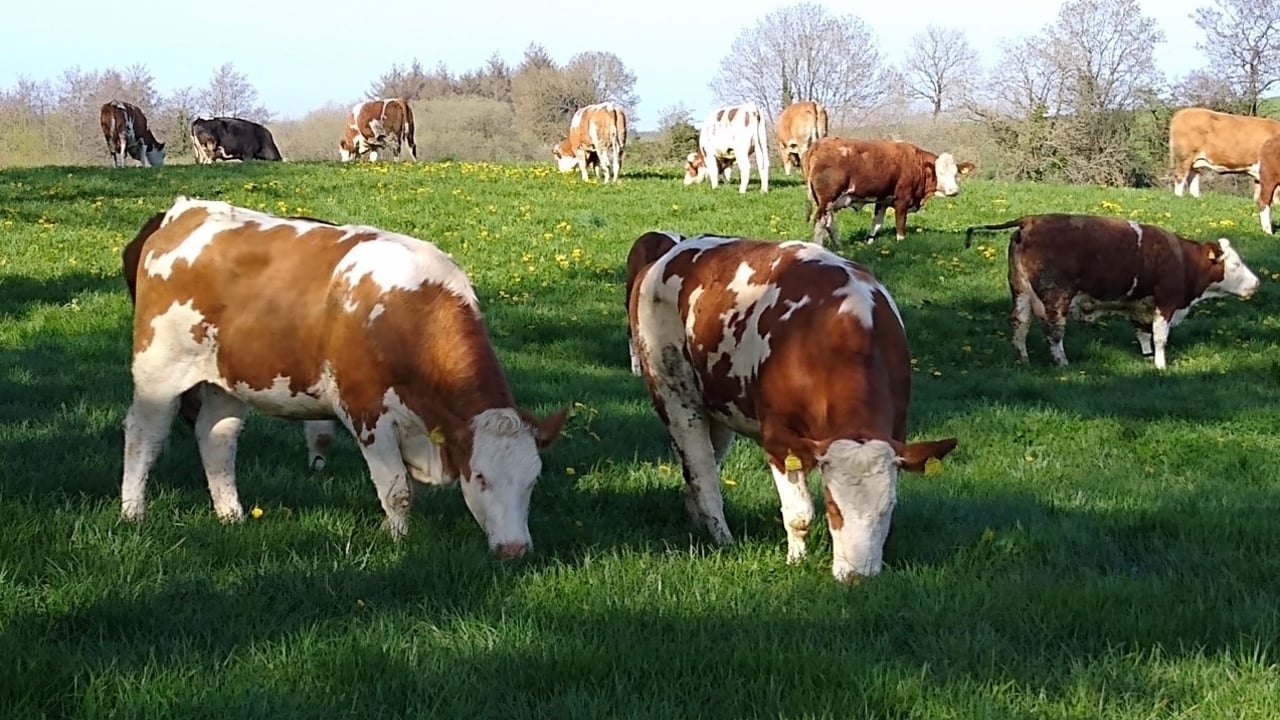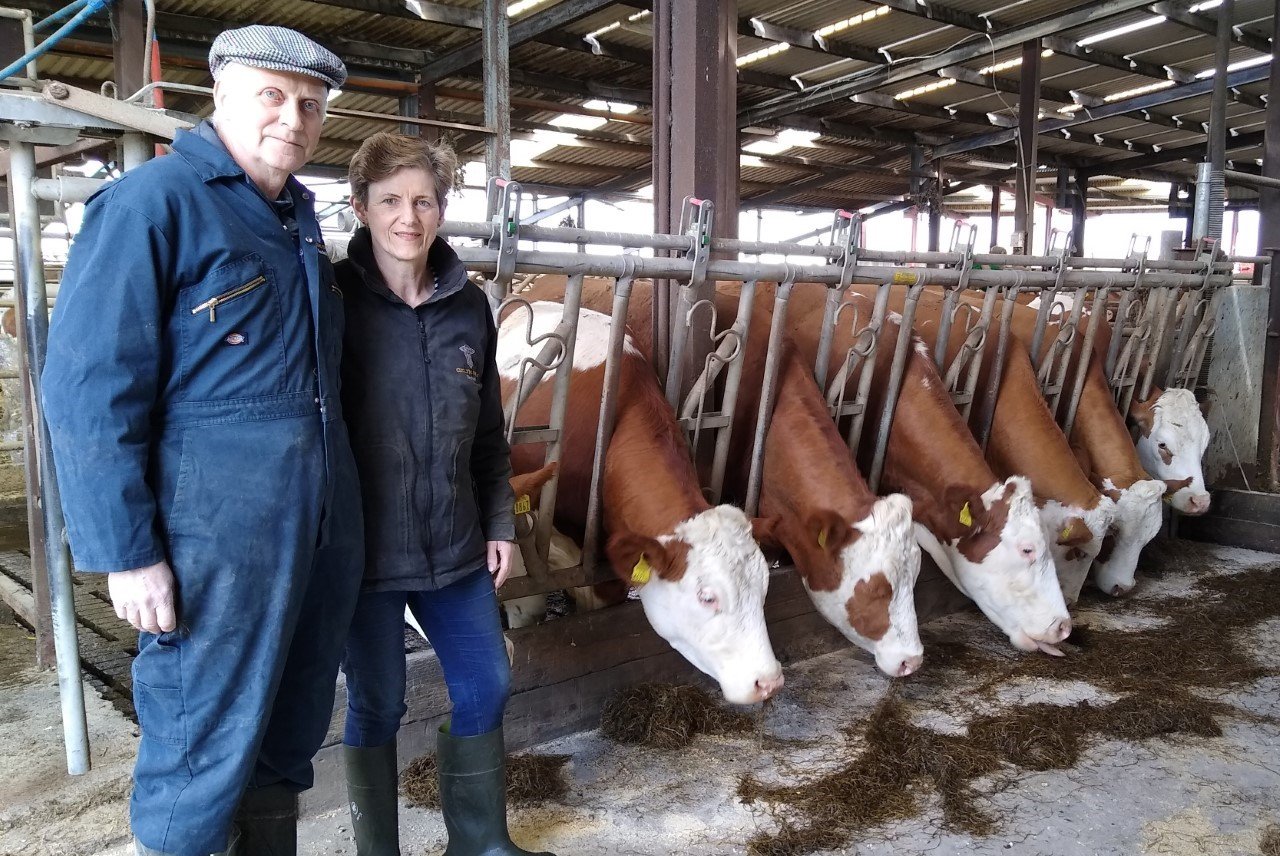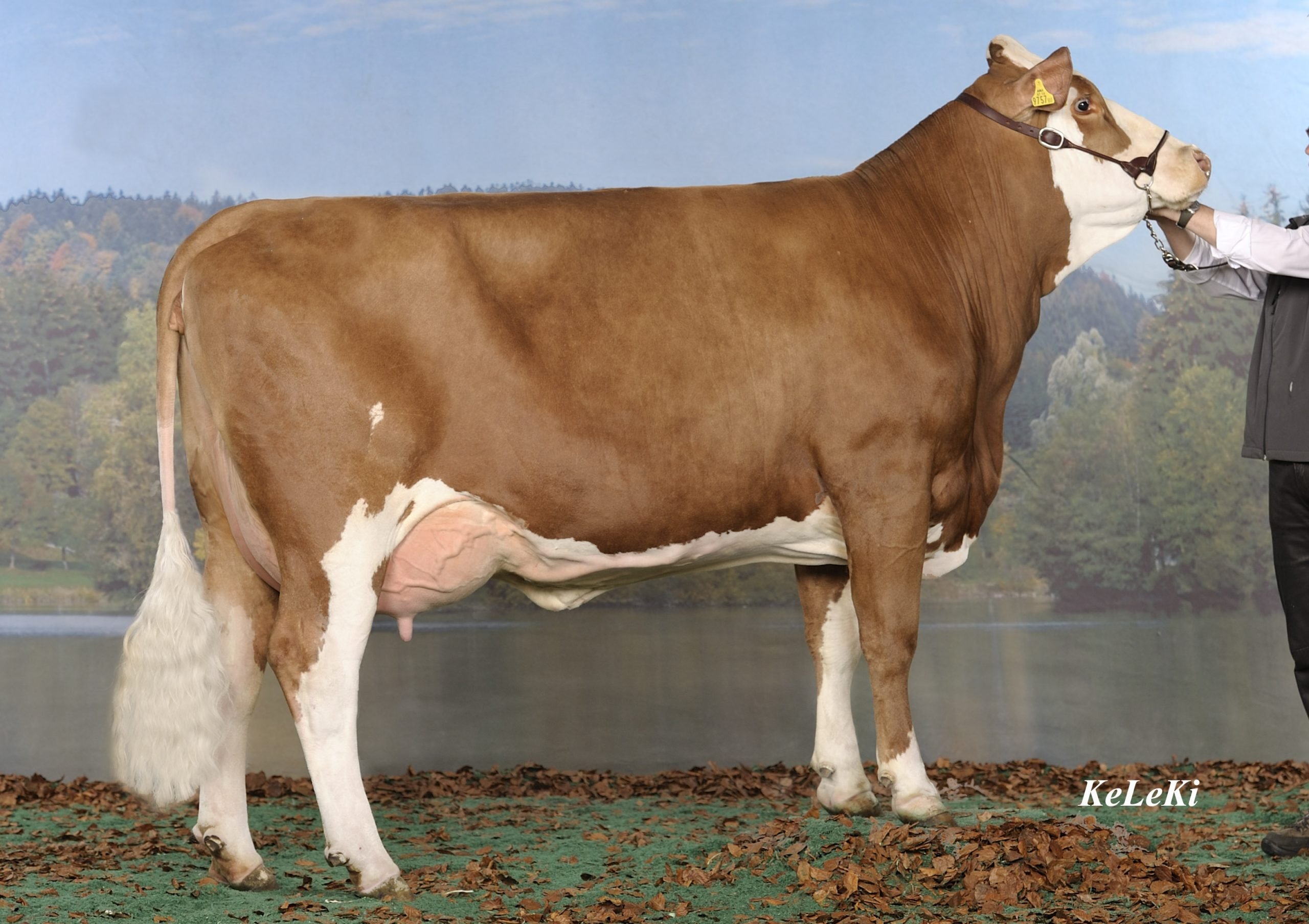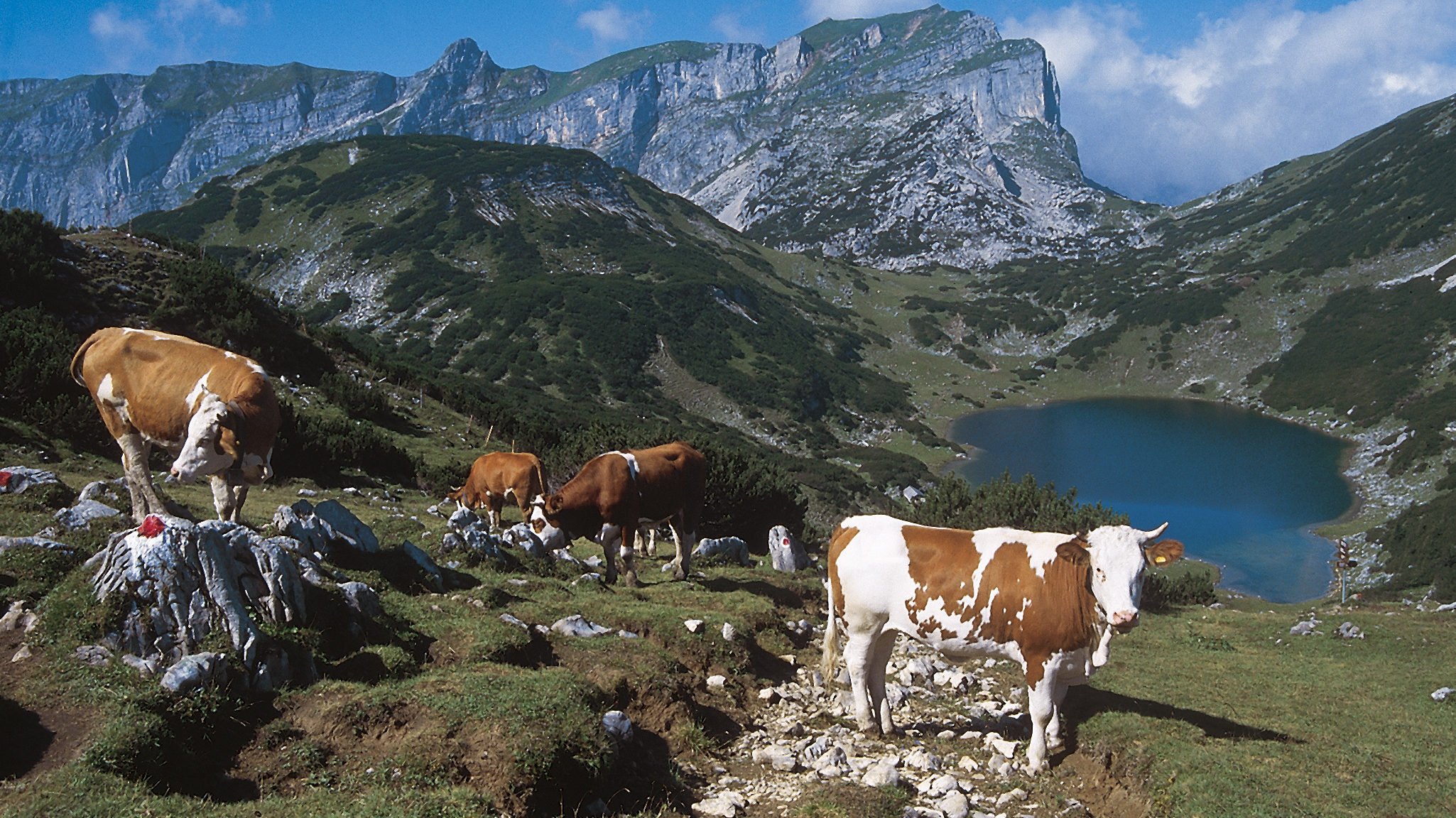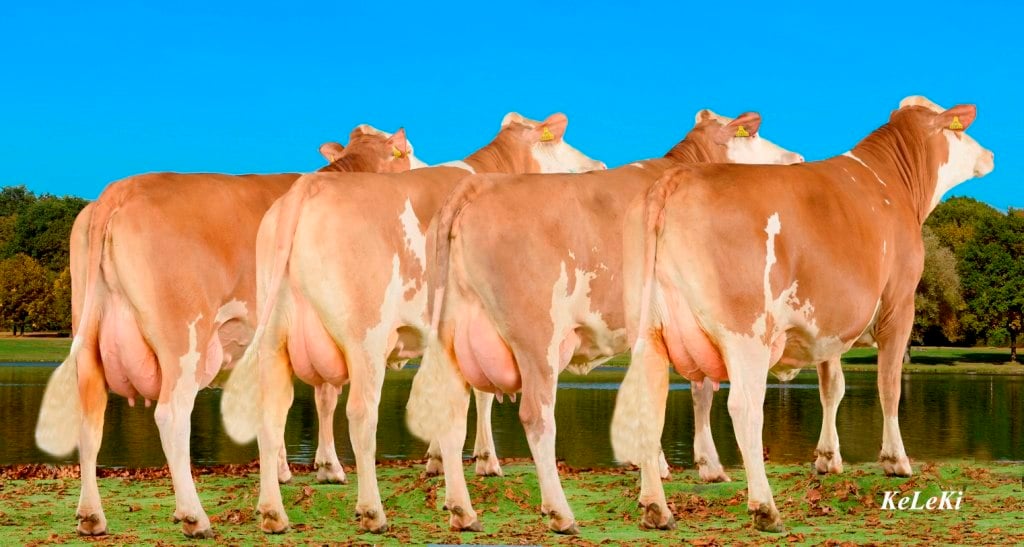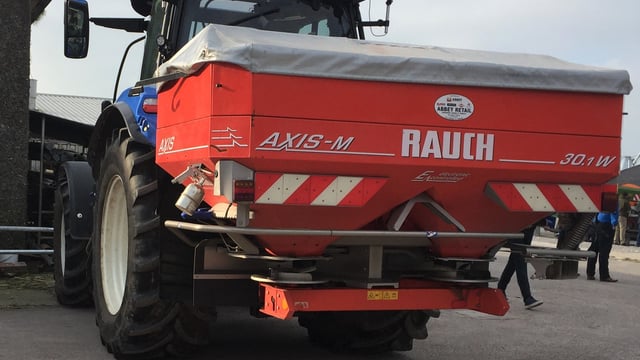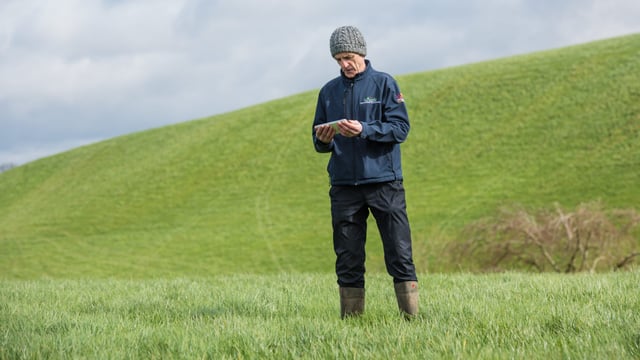Putting 'balance back in the system' with a Fleckvieh focus
There has been a "huge increase" in demand for Fleckvieh cows over the last 12 months, according to dairy farmer and director of Celtic Sires Gerard Brickley.
Speaking to AgriLand, Gerard - who runs a dairy farm with his wife Angela in Coolrain, Co. Laois - explained: "It’s mainly driven by the calf value.
"We see people this year who have both Friesian and Fleckvieh calves, crossbreds, going into the mart and what we’re hearing back broadly, at two weeks old.
"It’s a great shot in the arm at a time of the year when dairy farms are quite tight for money.
"We don’t think this is the reason that people will stay with the breed in the long term but it is a key reason they’re moving to it at the moment," he added.
When asked about the key benefits of the breed, Gerard explained that they are physically a stronger, more robust cow - which "translates into less veterinary bills one way or another", along with the obvious higher calf and cull cow values.
One of the key benefits that Gerard highlighted was the efficiency of the breed, from both a beef and dairy production standpoint.
"You have tremendous raw materials coming into the beef herd," he said.
"You have the same volume or more of milk - and yet you have extra income from the beef side of it as well and the extra strength of the cow helps to reduce other costs."
Quizzed on the dairy side of things, the farmer said: "In an Irish context, I would put them somewhere more than midway between a British Friesian and a Holstein Friesian, just purely looking at milk production or volumes of milk.
"Solids at a national level are 0.1% better for both fat and protein, so that’s nothing of note.
"Also, there’s a much higher level of milk recording there than here.
"The production ability, admittedly with a better feeding system, is way higher than what we’re used to here," he asserted.
Turning to the fertility and maintenance point of view, Gerard said he found both to be very good, explaining:
"In early lactation, they don’t peak as high and they don’t peak as early.
"So that means that they are not under as much negative energy balance in the first two or three months – and that helps everything.
"It keeps them in better condition, it helps their fertility, it causes less stress on their legs; everything. I really think that’s a key strength that the breed has," Gerard said.
Asked about calving difficulty, the farmer said: "When people are starting out for the first time trying Fleckvieh we always recommend that they try the easiest calving bulls for the first year until they see how they’re working in the herd, and then you can gradually work to the more average ones.
"I would say as a breed they are slightly easier calving than the Irish Simmental but we have some extremely easy-calving bulls in AI as well."
Gerard and Angela also run a Fleckvieh semen business called Celtic Sires. Asked about this, Gerard said:
"When we got interested first in the Fleckvieh we asked the Austrians about distributing their semen here, so we have secured the semen distribution rights for all Austrian Fleckvieh semen coming into Ireland.
We set up a small depot, got a Department of Agriculture licencing for it, and we deliver it direct to DIY and out to technicians through the main AI companies as well.
"We only focus on Fleckvieh; we’re just specialists on Fleckvieh – we don’t deal with other breeds," he added.
The Brickleys have exhibited at "the Ploughing", produced literature and leaflets and even run biannual study tours to Austria to help educate on the breed.
"We’re also involved in importing breeding stock as well, but the main focus is the dairy farm at home and then the semen business."
As well as producing hard-copy leaflets, the company has a website celticsires.ie, and Twitter, Facebook, Instagram and Youtube channels of the same name. "It's difficult to get time for everything but we are trying," Gerard added.
"I think there’s a definite change, particularly in the last 12 months in the level of interest in them.
"Central Europe has always gone with their dual-purpose type animal; primarily for milk production but always keeping the strong physical traits there - and I really think it’s time that we need to look at it again.
"It’s all down to economics in the end and it makes sense from that angle. It’s putting balance back into the system," Gerard concluded.

